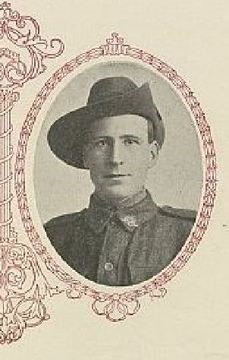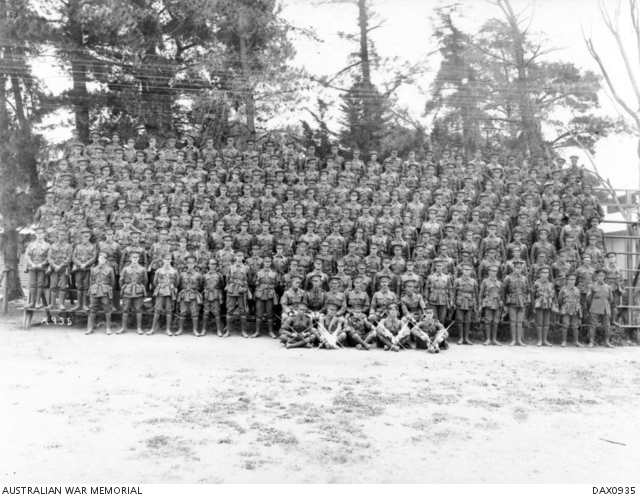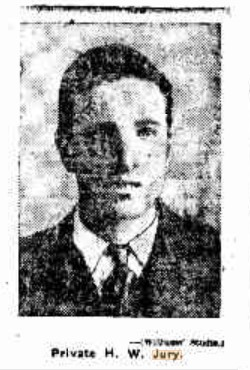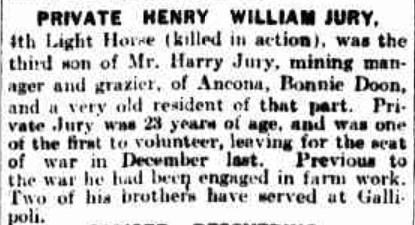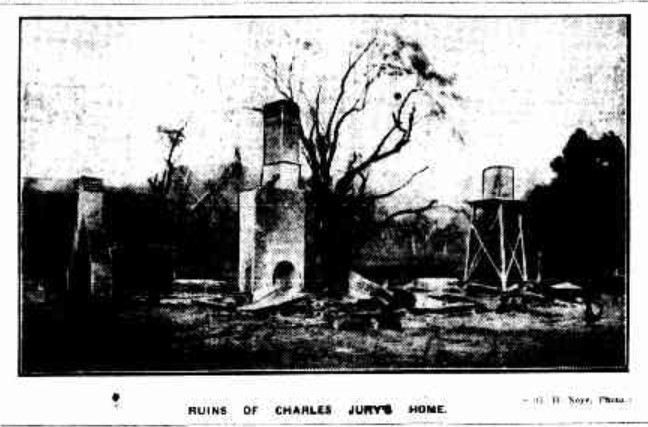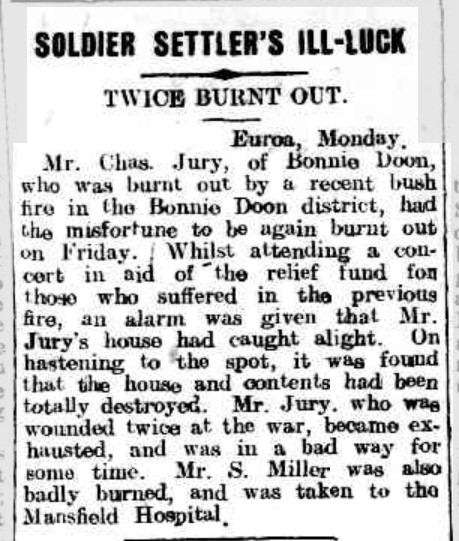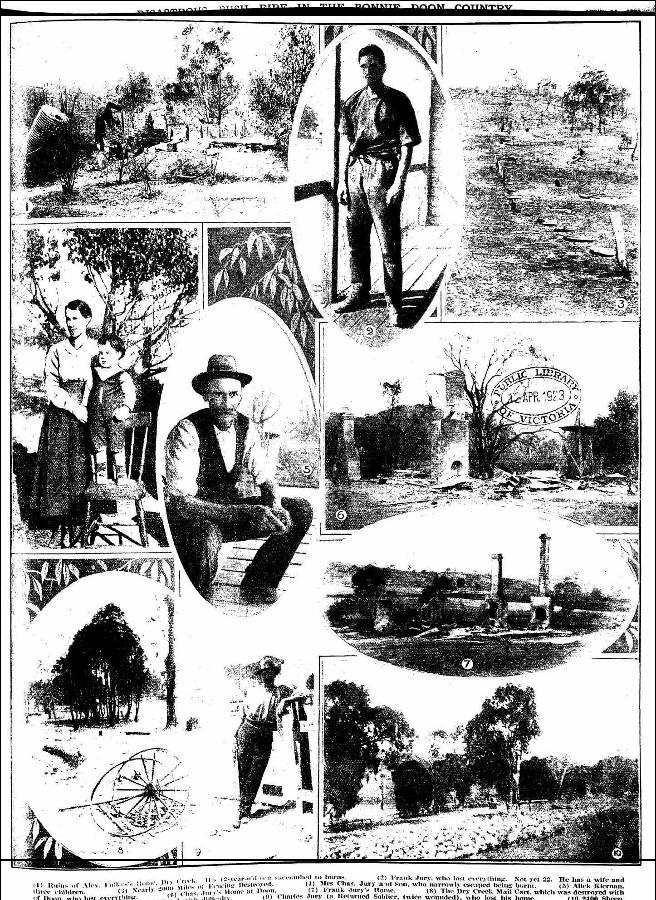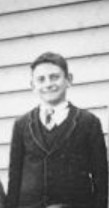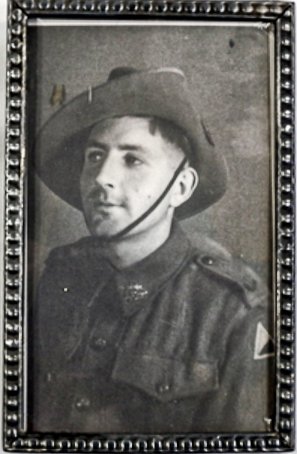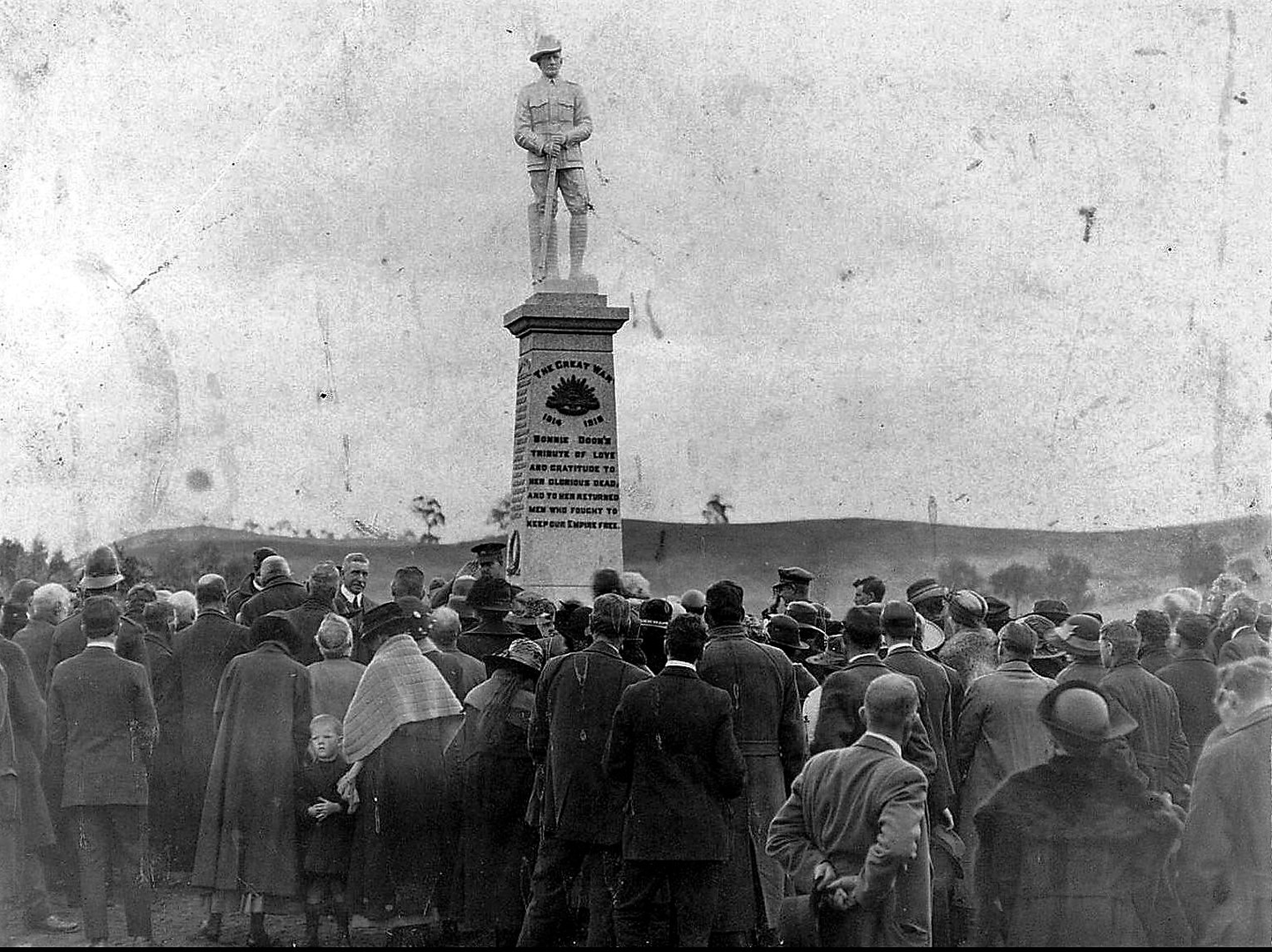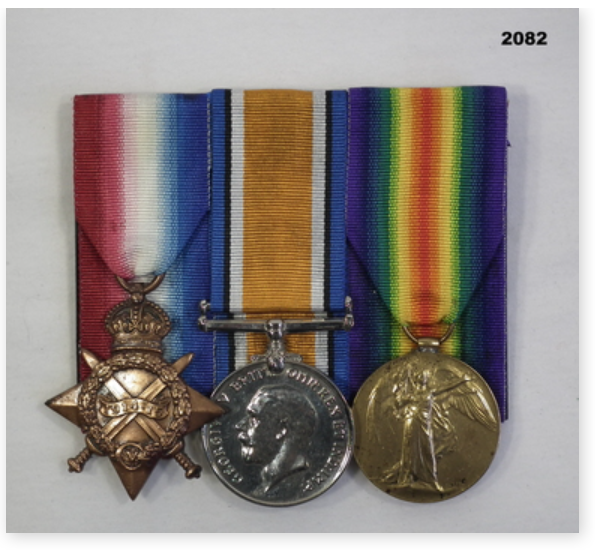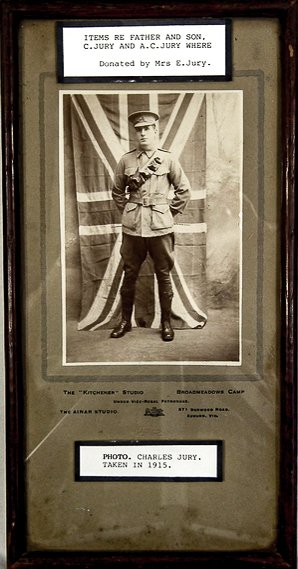Charles JURY
Eyes grey, Hair dark brown, Complexion ruddy
Charles Jury - Wounded in Action Three Times
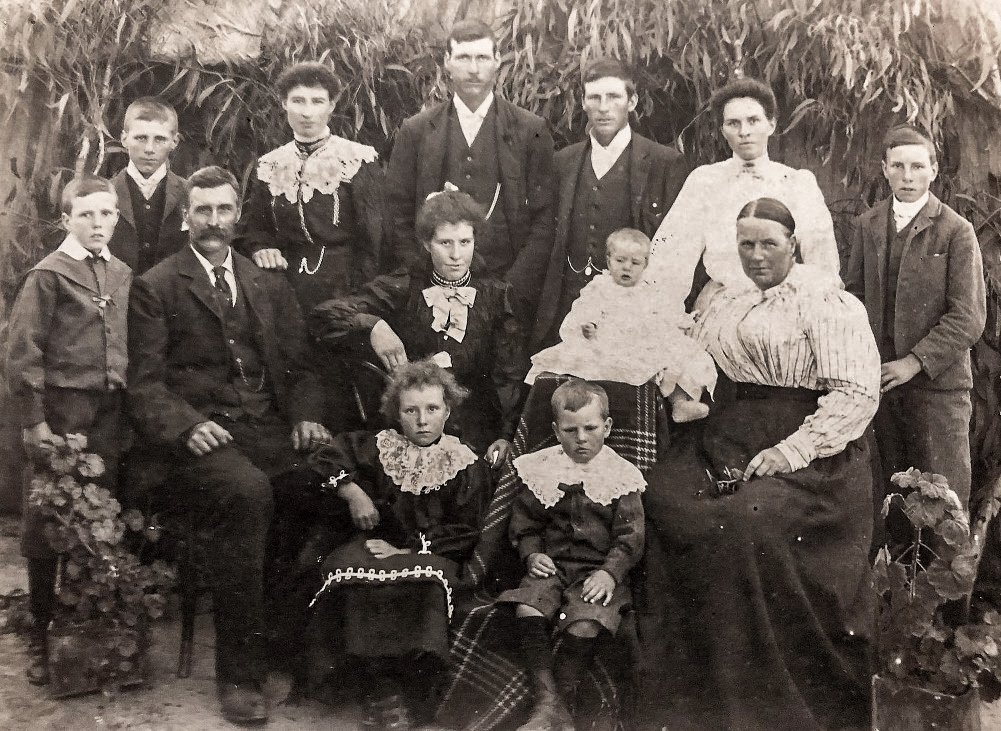
Parents William and Mary. Children in age order: Susan, Annie 'Tiny' Louisa, Thomas Tyson, Charles, Mary Emily 'Molly', Henry William, Alfred James, Edward (Ted), Harriet "Ettie" Selena, Frank and Elizabeth Ellen 'Nell'
Charles Jury was the fourth child of William Henry Jury and Mary Agnes Wright. William was a mining manager and grazier who had land at Ancona, near Merton in Victoria about 200km north east of Melbourne. Charles grew up on the farm and spent most of his life as a farmer or forest worker.
On return from war he married Mary Prowd and they had three children. In 1923, Charles lost his home at Bonnie Doon having been burnt out twice. Not long after he and his young family moved to Kyneton. In the 1940’s they moved to Melbourne, where he resided until his death in 1968. Charles lost two of his brothers, Henry and Alfred, in the war and his mother, Mary, died in 1919 shortly after the war’s end.
Brothers at war
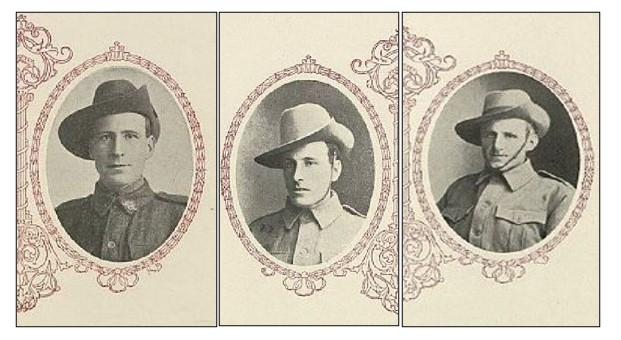
Charles enlisted in July 1915 and was assigned to the 29th Battalion, A Company. Along with 724 Norman Jones from Finley, who likely knew Charles. The 29th Battalion was raised in Victoria under the command of Colonel Alfred Bennett. Their initial training was at Seymour before later joining other units at the Broadmeadows Camp. They embarked from Melbourne on 10 November 1915.
Charles’ younger brothers Henry and Alfred had enlisted in September 1914 and were sent to Gallipoli in May 1915 as part of the 4th Light Brigade.
Sadly, Henry was killed in action on 26 November 1915 whilst Charles was at sea. He is buried at Shell Green Cemetery (Plot I, Row C, Grave No. 1), Gallipoli, Turkey.
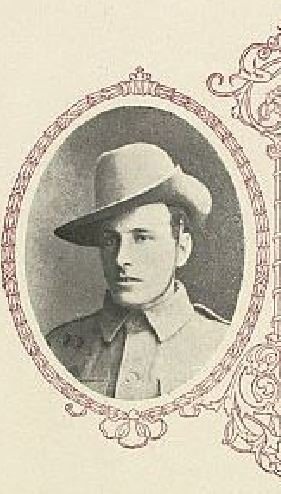
Charles’ other brother Alfred continued with the 4th and was sent to France in March 1916. He was back and forth to hospital throughout 1916 to 1917 with trench foot. Assigned to the 2nd Light Horse Brigade initially, he was a trooper and was wounded in action on 17 April 1918. He was due to return home. However he succumbed to his injuries five days later and was buried at Mondinghem British Cemetery (Plot X, Row B, Grave No. 42), Proven, Belgium.
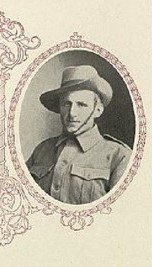
Charles, meanwhile, was also on the way to France in June 1916. After a short period of training, they left Australia for Egypt on 10 November, 1915 sailing on the A11 Ascanius.
Before departing, the soldiers had been on parade in Melbourne in front of a good crowd. In the Weekly Times (Sat 6 Nov 1915), the Minister for Defence, H.F. Pearce said:
“I do not think I have ever seen a finer body of men.”
Egypt and the Wester Front
After a month’s voyage, they arrived in Suez, Egypt on 7 December.
Training and defence of the Suez Canal continued until mid-June with postings at Ismailia, Tel el Kebir, Ferry Post and Moascar. The troops were reviewed by the Prince of Wales while in Tel el Kebir.
The call to the Western front came in mid-June and on 16 June, the 29th boarded the troop ship “Tunisian” in Alexandria, headed to Marseilles, arriving there on the 23rd. They then were on a train to Hazebrouck then to Steenbeque and by the 26th were encamped in Morbecque, about 30 km from Fleurbaix.
The Aussies were well received by the French. In a letter home, James Lang (858), 29th Battalion from Glengarry, Victoria, wrote:
“The French people lined the streets to see us, and gave us a great welcome. Lots of poor women and young girls started crying. No doubt the poor things were thinking of their own dear ones who had gone to the front.”
On 1 July the 29th moved back to Hazebrouck. Gas masks were included in their training for the possible use of “lachrymatory shells” – tear gas. Training was tough and rugged. One day included a march of 16 miles carrying a 75 lb kit, which only the youngest and fittest could complete.
On 9 July they were moved to Erquingham, just outside of Fleurbaix and on the 10th they got their first experience in the trenches with the “men all in good spirits”. They were back at their billets in Fleurbaix four days later. A gas alarm was sounded on the 15th, but there was no effect on the troops in Fleurbaix.
Battle of Fromelles
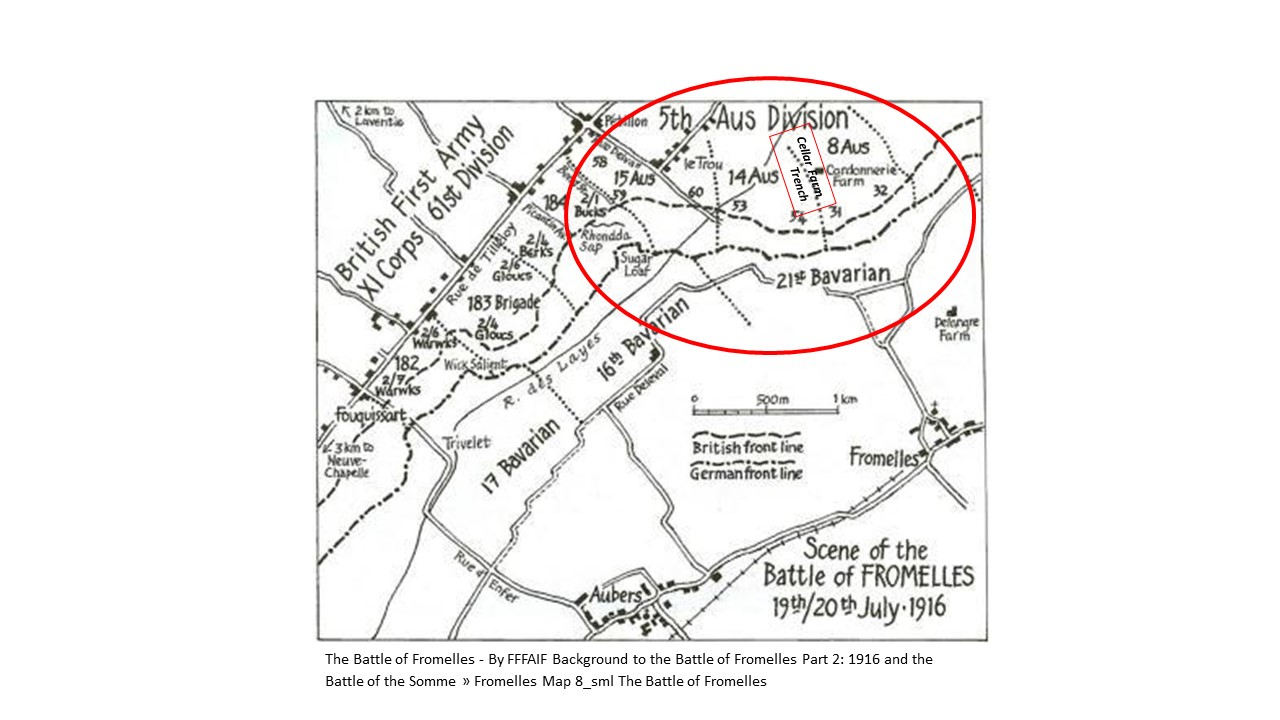
The 29th’s role was to be a ‘fourth’ battalion on the left flank of the attack. With the 30th they were to provide support for the attacking 31st and 32nd Battalions by digging trenches, carrying supplies/ammunition and to be called in as reserves if needed for the fighting.
The original attack was planned for the 17th, but bad weather caused it to be postponed. On 19 July the 29th were in the rear trenches, ready for the attack.
The 32nd’s charge over the parapet began at 5:53 PM and the 31st’s at 5:58 PM. There were machine guns emplacements to their left and directly ahead at Delrangre Farm and there was heavy artillery fire in No-Man’s-Land.
The initial assaults were successful and by 6:30 PM the Aussies were in control of the German’s 1st line system, which was described as:
“practically a ditch with from 1 to 2 feet of mud and slush at the bottom”.
By 8:00 PM, A & D Companies began to carry bombs and supplies to the front trenches.
The Australians’ left flank had also come under heavy bombardment with high explosives and shrapnel. Return bombardment support was provided and the 32nd was told “the trenches were to be held at all costs”. Source AWM4 23/49/12, 32nd Battalion War Diaries, July 1916, page 12
At 10:00 PM, additional support was being requested and C and D Companies joined in. Unfortunately, they found that a number of the grenades they were carrying had no fuses.
The Germans counter attacked and at 2:00 AM and A and D Companies were drawn into the fighting. B and C Companies were also engaged, continuing to carry supplies and providing cover for soldiers who were retiring from the battle. But, “After a struggle in No-Man’s Land, the Germans were content to stop at their own trench.” Source AWM4 23/46/12, 29th Battalion War Diaries, July 1916, page 7
In the end, the 29th had to fight their way back to their own lines, ‘run for it’, or be killed, wounded or captured. At some point during 19 to 20 July, Charles was wounded in action with a shrapnel gunshot wound in his neck.
He was initially treated at the No 3 Canadian General Hospital Boulogne before being transferred to Reading War Hospital in England until December 1916.
In January 1917, Charles was promoted to Lance Corporal. On 3 March 1917 he was again wounded in action with shell concussion, returning to the unit on 29 March. He was again wounded in action on 26 September 1917 at Polygon Wood and treated for shell shock. He returned to the unit in February 1918 and was eventually discharged and returned home in January 1919.
Returning from Battle
Shortly after he returned from war, his mother Mary passed away in March 1919, possibly the stress of losing two sons in the war and another wounded contributing towards the family’s turmoil. Charles returned to the farm at Bonnie Doon where he met and married Mary Harriet Prowd in September 1919 and they welcomed their first child in 1920.
Charles along with his brother Frank built their homes near Bonnie Doon and he returned to farming. Tragedy struck in 1923 when their family home burnt down twice. The family stayed in the area for the next few years with their oldest child Alfred attending school in Maindample.
The family lost their home in 1923. His brother Frank also lost his home.
The family moved to Kyneton where Charles worked as a farmer. In the 1940s the family moved to Melbourne. Mary died in 1949, and Charles passed away in 1968.
Remembering Charles
Charles is remembered with honour at the Bonnie Doon War Memorial alongside his brothers. Charles is buried at Springvale Botanical Cemetery.
Lest we forget.
Links to Official Records
The Fromelles Association would love to hear from you

Contacts
(Contact: carla@fromelles.info or geoffrey@fromelles.info).
(Contact: army.uwc@defence.gov.au or phone 1800 019 090).
Donations
If you are able, please contribute to the upkeep of this resource.
(Contact: bill@fromelles.info ).

